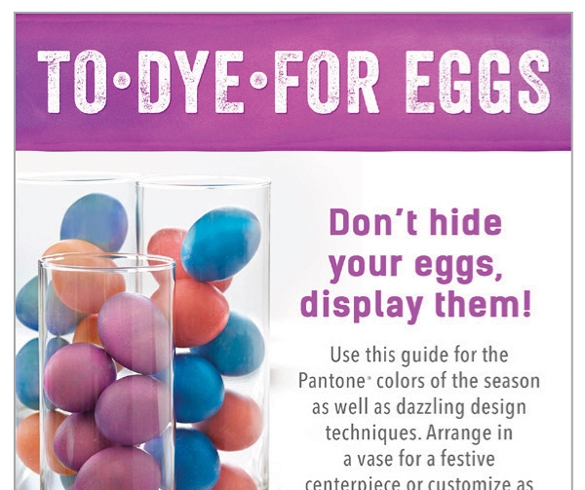
Have you ever felt guilty after eating a certain food or dish because it is ‘bad’ for you? I’m betting the answer is yes. What if I told you that you don’t have to feel that way again? The truth is, thinking about foods as ‘good’ and ‘bad’ needs to become a thing of the past and may actually be hurting you in the long run.
We talked to dietitians to find out why this way of thinking is outdated, where it came from and what you should be doing instead.
THE PROBLEM WITH ‘GOOD’ VS. ‘BAD’
The main issue with this black-and-white way of thinking is it’s subjective. Who exactly makes the rules, anyway? Of course, with all of the options out there, it would be much easier if it worked this way, but unfortunately, you can’t just be right or wrong by eating a certain food.
“For example, a Paleo diet advocate will tell you that meat is good for you, while the plant-based diet experts believe it is bad. Ketogenic diet followers tell us that grains are bad for your health yet followers of a Mediterranean diet say they are a good part of the daily diet,” explains Dr. David Friedman, clinical nutritionist and author of “Food Sanity: How to Eat in a World of Fads and Fiction.” “With so many differences of opinions, everyone does seem to be on the same page when it comes to few things: Food is healthier if it’s non-GMO, chemical-, antibiotic- and hormone-free.”
Though it may seem crazy to think that you can follow a healthy diet and still enjoy some of your favorite indulgences, we have a secret: It is possible thanks to the principles of a balanced diet and eating in moderation.
READ MORE > HOW DIETITIANS DEAL WITH 7 HEALTHY-EATING FAILS
A BALANCED DIET, EXPLAINED
It’s natural to think of a balanced diet as those food pyramids we used to see in textbooks, but those recommendations are proving to be outdated. In fact, Friedman calls this pyramid the ‘BUYased diet’ because it was created with the money of big companies and endorsements. He adds that even in the food industry, money talks.
“There is room for all food in a balanced diet,” urges Amanda Turner, MS, RD, owner and sports dietitian at Active Fueling in Denver, Colorado. “Eating pizza or ice cream on occasion does not automatically put an individual at risk for chronic health disease. Also, avoiding specific foods can lead to feelings of deprivation that may precede overeating or binge-eating type of behavior. An ideal balance is eating tastier, less nutrient dense foods as well as more nutrient dense foods throughout the week.”
Both Dr. Friedman and Saraï R. Pannekoek, a sports performance dietitian and clinical epidemiologist, agree with this way of thinking. Pannekoek explains the trick is to develop healthy habits that, for the most part, have you eating foods that support your health and performance mixed with some treats every once in awhile. Paying attention to how you feel after eating certain foods can help you realize when you are out of balance and need to readjust what you’ve been eating.
“When it comes to eating, I live by two simple rules,” divulges Friedman. “First, if you can’t pronounce it, don’t eat it. For example, if you see a word like ‘disodiumguanylate’ on the label, it’s pretty safe to assume this ingredient isn’t from nature and, therefore, doesn’t belong in your mouth. My second rule is, listen to your body and not scientists, the media or the latest fad diet experts.”
PUTTING BALANCE AND MODERATION TO WORK
Besides just going by feel, there are some concrete steps you can take to practice eating a balanced diet. As Friedman notes, a good place to start is to focus on adding more whole foods to your daily mix.
“Choose foods that are less processed over (highly) processed foods,” Pannekoek agrees. “It’s better to have a wholesome apple instead of a juice, because it contains more of the micronutrients and fiber than a juice, which often contains more added sugar, too.”
A balanced diet isn’t only about food, but water, too! Making sure you are staying hydrated actually helps you feel more full, which is important as you pay attention to cues your body gives that you are satisfied.
“Drinking two 8-ounce glasses of water 20 minutes before meals can result in eating 30% less food,” notes Friedman. “This helps create a feeling of fullness and takes up room in your stomach so not as much food is needed to reach the point of satiety. … In addition, drinking more water may keep you away from soda and other calorie-laden beverages.”
Finally — and this one may take some conscious work — you should build an understanding of why you are eating certain foods. Are you hungry and that’s why you want chips or are you just eating because you are bored? Once you know the why, you can focus on the how.
“The trick is to eat nutrient-dense foods most of the time and your favorite foods some of the time; some people think of this as the 80/20 rule,” adds Turner. “Eighty percent of the time we choose foods that fuel us well so we can work, play and recover best. Twenty percent of the time we choose foods that we absolutely love, regardless of nutrient or energy density. The trick is accepting that all foods can and will work for you; we just have to be unconditionally accepting of all foods.”







